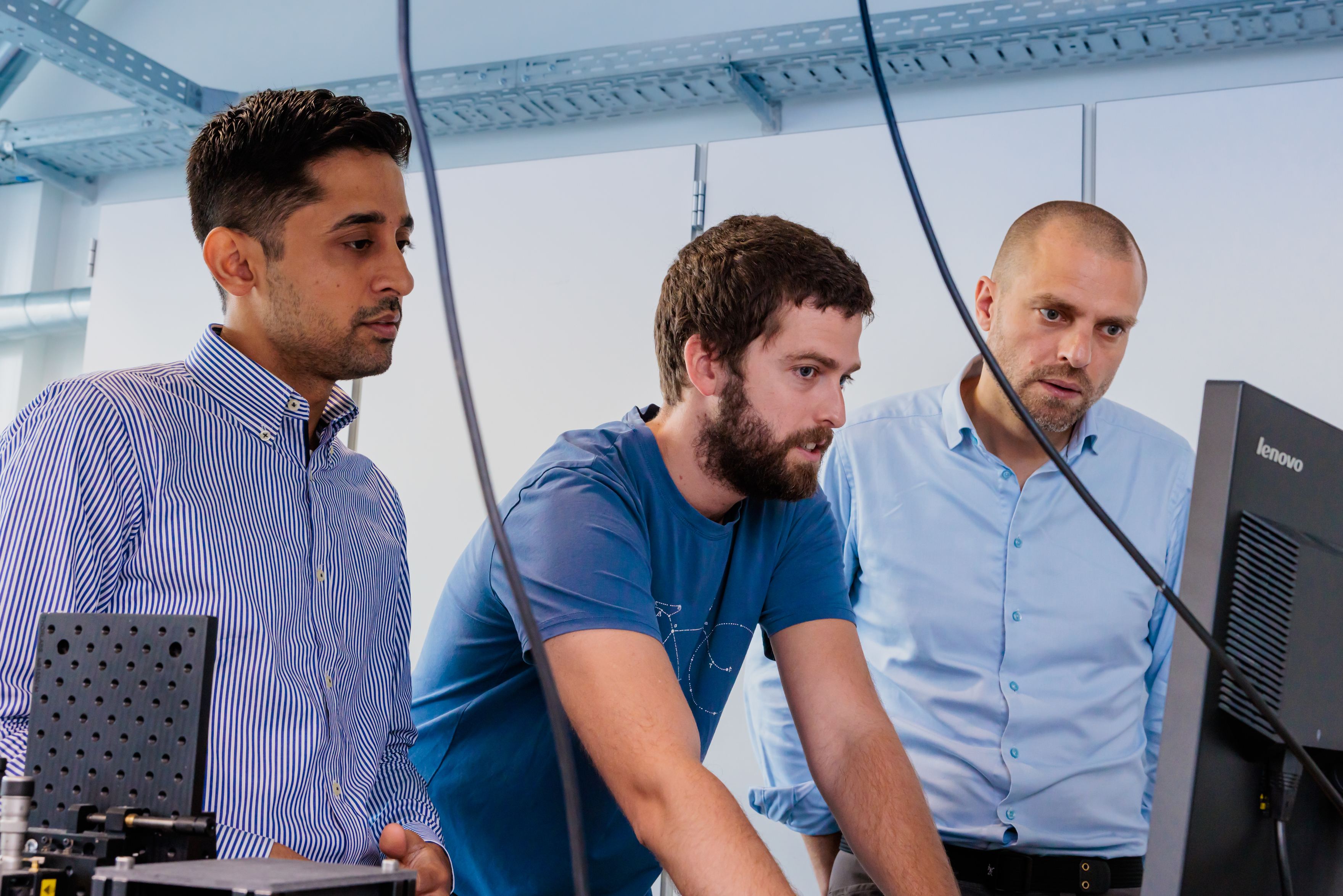A central goal in quantum optics and photonics is to increase the strength of the interaction between light and matter to produce, e.g., better photodetectors or quantum light sources. The best way to do that is to use optical resonators that store light for a long time, making it interact more strongly with matter. If the resonator is also very small, such that light is squeezed into a tiny region of space, the interaction is enhanced even further. The ideal resonator would store light for a long time in a region at the size of a single atom.
Physicists and engineers have struggled for decades with how small optical resonators can be made without making them very lossy, which is equivalent to asking how small you can make a semiconductor device. The semiconductor industry’s roadmap for the next 15 years predicts that the smallest possible width of a semiconductor structure will be no less than 8 nm, which is several tens of atoms wide.
The team behind a new paper in Nature, Associate Professor Søren Stobbe and his colleagues at DTU Electro demonstrated 8 nm cavities last year, but now they propose and demonstrate a novel approach to fabricate a self-assembling cavity with an air void at the scale of a few atoms. Their paper ’Self-assembled photonic cavities with atomic-scale confinement’ detailing the results is published today in Nature.
To briefly explain the experiment, two halves of silicon structures are suspended on springs, although in the first step, the silicon device is firmly attached to a layer of glass. The devices are made by conventional semiconductor technology, so the two halves are a few tens of nanometers apart. Upon selective etching of the glass, the structure is released and now only suspended by the springs, and because the two halves are fabricated so close to each other, they attract due to surface forces. By carefully engineering the design of the silicon structures, the result is a self-assembled resonator with bowtie-shaped gaps at the atomic scale surrounded by silicon mirrors.
“We are far from a circuit that builds itself completely. But we have succeeded in converging two approaches that have been travelling along parallel tracks so far. And it allowed us to build a silicon resonator with unprecedented miniaturization,” says Søren Stobbe.


